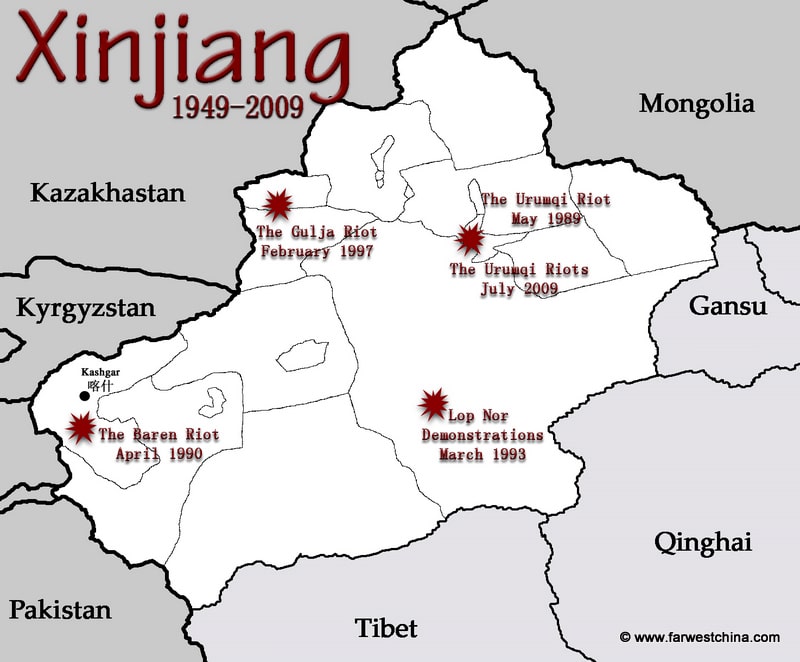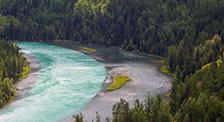A History of Unrest in Xinjiang (prior to 2009)
Xinjiang, in both recent and ancient history, has never been known as a haven of peace and tranquility. Murders and coups of the past have now been replaced by riots and what the Chinese call “splittism” (the desire to separate the country).

Here’s a quick look at the riots and unrest that have occurred in Xinjiang’s recent history. It’s not a comprehensive list but it includes the largest events that have occurred since the province’s ‘liberation’ in 1949.
The Urumqi Riot – May 1989
While Chinese leadership was coping with the demonstrations happening in Beijing, another student demonstration was underway, this one in Urumqi.
Here, according to authorities at that time, an orderly march was being conducted. In reality these Uyghur students had wrecked cars and attacked the government headquarters.
Interestingly, the reason for this march had nothing to do with Beijing but rather was in protest of the recently published book called Sexual Customs which purported to describe the sexual life of Muslims.
The Baren Riot – April 1990
The small town of Baren is located south-west of Kashgar and was a surprise location for any sort of uprising.
Everything supposedly began when police tried to break up a crowd outraged at the closure of a mosque before a religious festival. Fighting broke out and was put down (20-50 deaths) by the Public Security Bureau with the help of 1,000 regular army troops.
According to Chinese reports, the protest included Muslim calls for jihad and ended in 5,000 criminal cases.
The Lop Nor Demonstration – March 1993
An event that wasn’t widely covered in the press was an anti-nuclear demonstration held in Lop Nor, the site of China’s nuclear testing ground.
The effects of nuclear testing in the areas surrounding Lop Nor, which has been recently brought to light by a Japanese researcher, were devastating.
According to a Hong Kong publication around 1,000 demonstrators broke down the fence surrounding the compound stealing explosives and setting fire to aircraft and tanks. Some protestors were killed while hundreds were arrested.
The Gulja (Yili) Riot – February 1997
Gulja, a former capital of that particular region of China, is currently referred to as Yining (伊宁) in Chinese. A fight somehow broke out (specific stories differ) between police and worshippers on the final day of Ramdan, the Muslim holy festival.
People take to the streets and march for little more than 2 hours before being stopped at the Yili Hotel (former Russian consulate). 300-500 arrested. By the next day the city was full of riots and riot police, with official reports citing 9 deaths while unofficial sources cited 30-400.
A curfew was imposed, the railway and airport were closed and the city was sealed off for 2 weeks.
The Urumqi Riot – July 2009
The biggest and, according to most reports, the deadliest of all Xinjiang’s riots, it started as a peaceful protest of a few hundred people in People’s Square and ended in thousands running the streets and the deaths of close to 200 people, Han and Uyghur.
Although Chinese publications are already releasing numbers, it will probably be a while before the full scope of this riot’s damage, including arrests, convictions and executions comes to light.
*For a more detailed look at what has happened in Xinjiang just in the past year, both small and large events, check out this timeline from the RFA which I found very useful.






